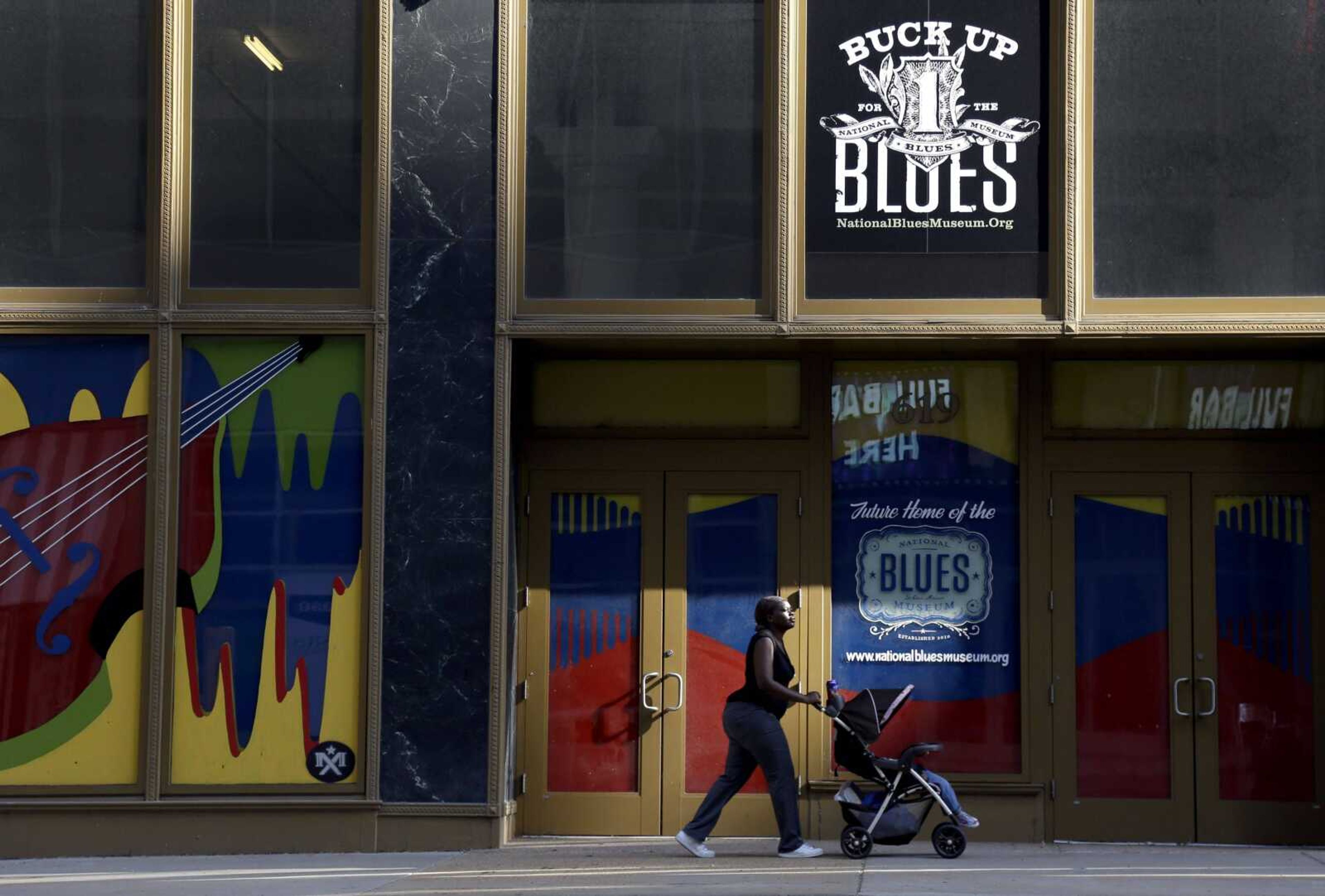Blues museum to call St. Louis home, sweet home
ST. LOUIS -- Die-hard music lovers, casual fans and globe-trotting tourists readily embrace Chicago as the home of the blues, spurred in large part by the Great Migration northward of Southern blacks in the early and mid-20th century. Robert Johnson, the genre's godfather, famously sang of "Sweet Home Chicago," and the Chicago Blues Festival draws more than 100,000 people each summer...
ST. LOUIS -- Die-hard music lovers, casual fans and globe-trotting tourists readily embrace Chicago as the home of the blues, spurred in large part by the Great Migration northward of Southern blacks in the early and mid-20th century.
Robert Johnson, the genre's godfather, famously sang of "Sweet Home Chicago," and the Chicago Blues Festival draws more than 100,000 people each summer.
But come next year, the National Blues Museum won't find a home in Chicago, but in a rival Midwest city 300 miles to the south.
St. Louis has its own musical history, organizers of the project say, with hometown heroes such as Ike Turner, Albert King and Chuck Berry. It's a legacy most prominently commemorated in the name of the city's National Hockey League team, the St. Louis Blues.
"We date way back," said museum organizer and music promoter Dave Beardsley. "Chicago didn't really blow up until the '50s, 'til Muddy (Waters) plugged in and went electric. We go back to W.C. Handy (who would later write ‘St. Louis Blues') in 1893. ... Our roots are far deeper than anyone knows."
The St. Louis museum grew out of a shared passion by Beardsley and fellow blues buff Mike Kociela, also a concert and festival promoter. Inspired by trips to the New Orleans Jazz and Heritage Festival, Kociela created St. Louis Bluesweek in 2010 to honor the city's musicians and heritage.
While Chicago has tried and failed to launch similar blues shrines, St. Louis' $14 million project won the backing of a local developer who wanted a museum to anchor a retail, residential and office complex next to the convention center downtown, just blocks from the Gateway Arch.
"There really wasn't a museum that told the entire story of the blues, from Day One through now," Kociela said. "I knew what it could do for our city and our region. This is a massive international tourist attraction."
Kociela and Beardsley reached out to leaders and musicians in cities with comparable bragging rights -- chiefly Chicago, Memphis and Clarksdale, Miss., -- for help, and none objected, Kociela said. To pitch the project, they brought in some of the genre's contemporary heavy hitters: Buddy Guy, Robert Cray, Shemekia Copeland, Derek Trucks and Trombone Shorty.
It worked. Pinnacle Entertainment, which owns two casinos in the St. Louis suburbs, donated $6 million to the planned 23,000-square-foot interactive museum with classrooms and a small theater to host local and national acts.
George Brock, an 81-year-old blues harmonica player, stands behind St. Louis' claim to blues fame. A half-century ago, Brock moved to St. Louis from Clarksdale, Miss., and he calls his adopted hometown a gem where blues can be heard seven nights a week and a musician can make a living.
"They overlooked St. Louis," he said. "St. Louis has just as much blues as Chicago."
St. Louis is "a major blues community," says Robert Santelli, a music historian and executive director of The Grammy Museum in Los Angeles. It's a distinction earned in part due to the Mississippi River and the stream of levee builders and stevedores who called the city home.
What it lacked, was a major record label to draw blues recording artists. Chicago had Chess Records and Alligator Records, while St. Louis could counter only with the more jazz-tinged Delmark Records, which lasted five years before relocating to Chicago in 1958.
Santelli, a former vice president of the Rock and Roll Hall of Fame in Cleveland and CEO of the Experience Music Project in Seattle, said St. Louis' project must cultivate a loyal local audience and build strong educational programs to succeed. Several music museums, from EMP to the Alabama Music Hall of Fame's paean to the Muscle Shoals sound, have struggled financially.
"Teachers are going to want to be sure that their students learn something of substance," he said. "It's not just going to be a day off listening to music."
Connect with the Southeast Missourian Newsroom:
For corrections to this story or other insights for the editor, click here. To submit a letter to the editor, click here. To learn about the Southeast Missourian’s AI Policy, click here.









